Storage Sense is one of the significant features of Windows 10. You can use it to scrutinize and manage the files on your hard drive and be informed of how much space is occupied by different file types. It also lets you choose the Save locations for your apps, documents, music, pictures and videos. Moreover, you can use it to locate and clean up the files which are surplus to the requirements.
This particular feature has been present on Windows Phone for quite some time now and it was brought to PCs as well with Windows 10, which was released with an idea on unifying the operating system across varieties of devices. Just like Storage Sense on Windows Phone, you can use it on your Windows 10 PC as well, to manage the storage with a better insight into what is actually eating up your space.
In this post, we will walk you through an in-depth guide for Storage Sense settings in Windows 10 PC, which you can use to clear the cache files in Windows 10.
Manage Storage using Windows 10 Settings
To open Storage Sense settings, you need to launch the Settings app. Here’s how to do so:
1. Press Windows Key + I key combination on your keyboard. This will launch Settings app.
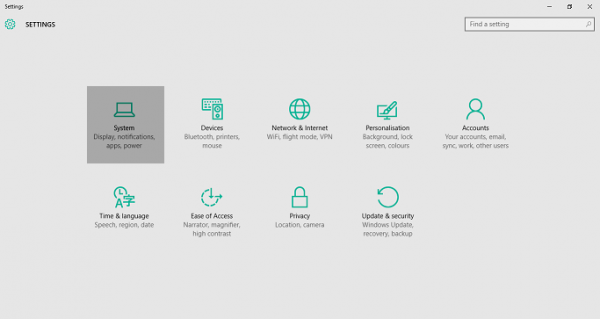
2. Click on System (Display, notifications, apps, power) on this screen, to open System settings.
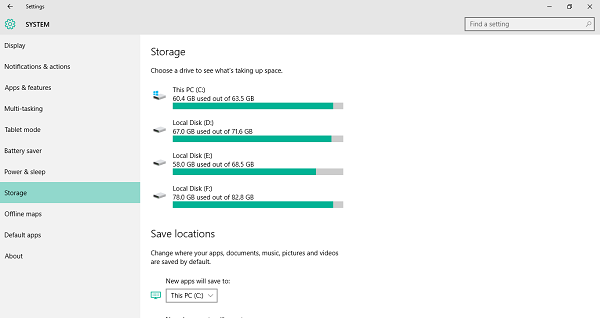
3. On the left side pane, locate and click Storage. This will open up Storage Sense on your PC showing up an overview of used and available space in each drive.
Check for Storage details on your System Drive
To check for storage usage on your drive where Windows 10 is installed, you can follow the below steps:
1. On Storage settings page, Click on the C Drive which has the Windows logo attached to its icon, under Storage section as shown in the below image.

2. This will open up Storage usage details for that specific drive. You can see how much space has been used out of the total storage capacity of the drive in question.
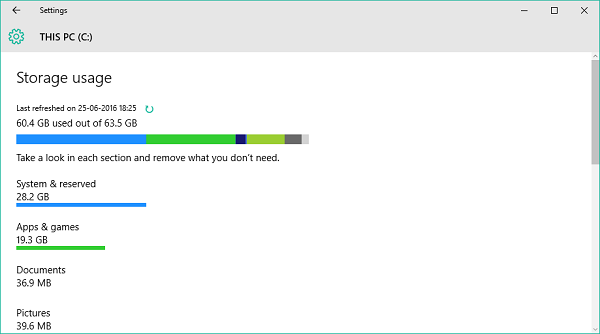
3. You can also see a color palette which shows the space filled up by different sections and file types. You’ll see those sections listed down below the color slab. You can then take a look into each one of them and remove what you don’t need to clear up some room. This post shows in detail how you can delete files & clean up your Hard Disk via Windows 10 Settings.
Read here about the Storage Diagnostic Tool in Windows 10.
Remove what you don’t need
There are several segments listed below the color palette which show the space occupied by each one of these. Let’s take a look at each:
System & reserved
In short, this sections contains the files which provide necessary juice for your PC to run Windows 10, so certainly you wouldn’t want to mess up with this particular portion. It contains System files which ensures that Windows is running properly, some files for Virtual memory which lets your PC do multi-tasking, a Hibernation file which lets your PC take a nap while maintaining your user state and System restore files which can be used while restoring your PC to a previous version/build.
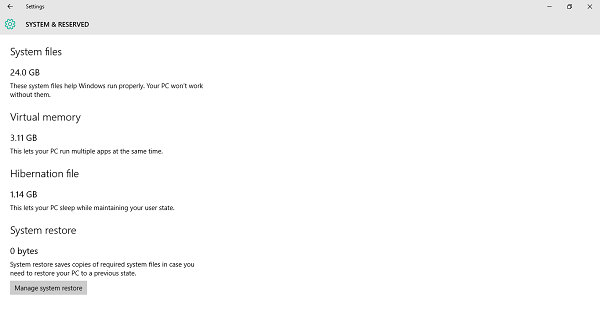
You can click on the Manage system restore button to enable System Restore.
Apps & games
In this section, you have details regarding the apps and games that are installed on your PC. You can search these apps in any drive on your PC and sort the results according to name, size or installation date. These settings are also available under Apps & features tab on System settings page.
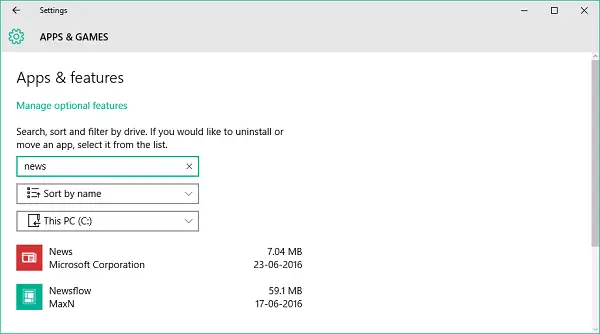
Desktop, Documents, Pictures, Music, Videos
You can use these sections to manage the files saved under respective folders at your User Account directory (C:\Users\Digdarshan\). Space occupied by all these folders is also shown in the respective window.
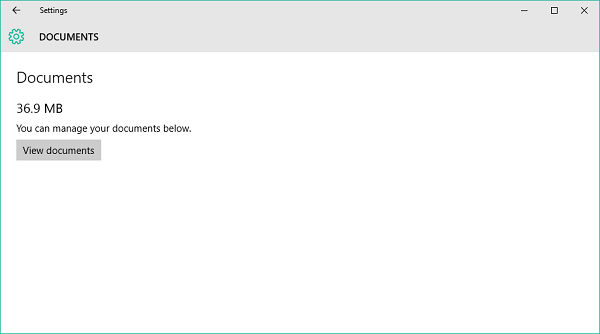
OneDrive, Mail, Maps
You can also see the space that has been filled up by files saved at OneDrive location in your PC, various files related to your mails and attachments and downloaded offline maps. All these can be managed by opening related apps and settings.
Temporary files
This is your spot to get rid of some unwanted files and gain some space. There can be several temporary cache files, deleted files stored in Recycle Bin, files related to the previous version of Windows (Windows.old files are also included in this).
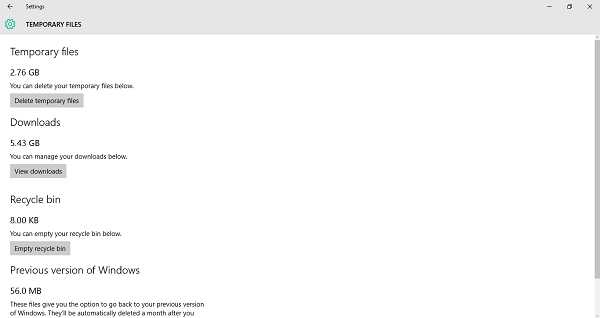
You can explore each of these sections to know more about it and how you can bargain in some space.
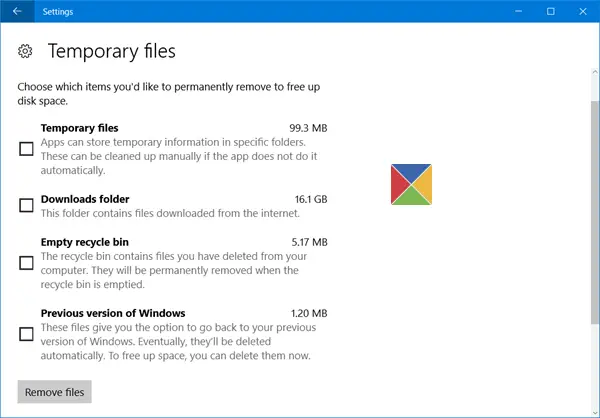
Clearing previous Windows installation files will help you reclaim a lot of disk space.
Other files
This portion contains such folders in your drive which are taking up large space and aren’t categorized in any of the above sections. You can scout around and take a look at these locations to identify whether anything can be cleared up from here.
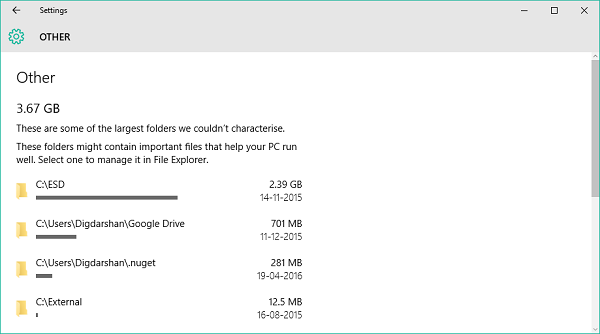
Similarly, you can manage your other drives as well.
Take a look into each of these sections to pin down the files and folders that can be deleted without affecting your PC.
That’s it for today folks! Come back again for tips on more Settings app components.
Windows 11 user? This post will show you how to use Storage Sense in Windows 11 to free up disk space.
Have a couple users who use Drive Vaccine and I use Storage Sense to move files and folders into the created exclusion drive. Works great, and imo is one of the best W10 features.
Couldn’t agree more :)